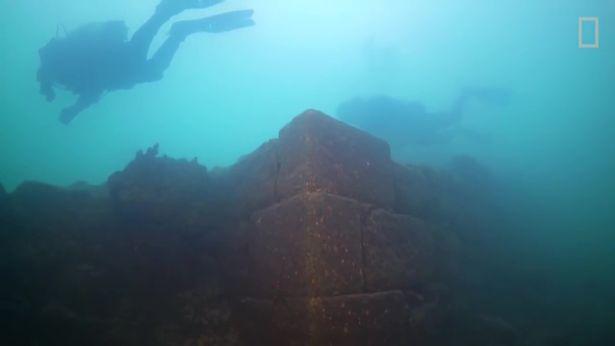Tim Berners-Lee, a British scientist, invented the World Wide Web (WWW) in 1989, while working at CERN. The Web was originally conceived and developed to meet the demand for automated information-sharing between scientists in universities and institutes around the world.
CERN is not an isolated laboratory, but rather the focal point for an extensive community that includes more than 17 000 scientists from over 100 countries. Although they typically spend some time on the CERN site, the scientists usually work at universities and national laboratories in their home countries. Reliable communication tools are therefore essential.The basic idea of the WWW was to merge the evolving technologies of computers, data networks and hypertext into a powerful and easy to use global information system.
Tim Berners-Lee wrote the first proposal for the World Wide Web in March 1989 and his second proposal in May 1990. Together with Belgian systems engineer Robert Cailliau, this was formalised as a management proposal in November 1990. This outlined the principal concepts and it defined important terms behind the Web. The document described a “hypertext project” called “WorldWideWeb” in which a “web” of “hypertext documents” could be viewed by “browsers”.By the end of 1990, Tim Berners-Lee had the first Web server and browser up and running at CERN, demonstrating his ideas. He developed the code for his Web server on a NeXT computer. To prevent it being accidentally switched off, the computer had a hand-written label in red ink: “This machine is a server. DO NOT POWER IT DOWN!!”
info.cern.ch was the address of the world’s first website and Web server, running on a NeXT computer at CERN. The first Web page address was http://info.cern.ch/hypertext/WWW/TheProject.htmlThis page contained links to information about the WWW project itself, including a description of hypertext, technical details for creating a Web server, and links to other Web servers as they became available.
The WWW design allowed easy access to existing information and an early web page linked to information useful to CERN scientists (e.g. the CERN phone book and guides for using CERN’s central computers). A search facility relied on keywords – there were no search engines in the early years.Berners-Lee’s original Web browser running on NeXT computers showed his vision and had many of the features of current Web browsers. In addition, it included the ability to modify pages from directly inside the browser – the first Web editing capability. This screenshot shows the browser running on a NeXT computer in 1993.
The Web extends
Only a few users had access to a NeXT computer platform on which the first browser ran, but development soon started on a simpler, ‘line-mode’ browser, which could run on any system. It was written by Nicola Pellow during her student work placement at CERN.In 1991, Berners-Lee released his WWW software. It included the ‘line-mode’ browser, Web server software and a library for developers. In March 1991, the software became available to colleagues using CERN computers. A few months later, in August 1991, he announced the WWW software on Internet newsgroups and interest in the project spread around the world.
Going global
Thanks to the efforts of Paul Kunz and Louise Addis, the first Web server in the US came online in December 1991, once again in a particle physics laboratory: the Stanford Linear Accelerator Center (SLAC) in California. At this stage, there were essentially only two kinds of browser. One was the original development version, which was sophisticated but available only on NeXT machines. The other was the ‘line-mode’ browser, which was easy to install and run on any platform but limited in power and user-friendliness. It was clear that the small team at CERN could not do all the work needed to develop the system further, so Berners-Lee launched a plea via the internet for other developers to join in. Several individuals wrote browsers, mostly for the X-Window System. Notable among these were MIDAS by Tony Johnson from SLAC, Viola by Pei Wei from technical publisher O’Reilly Books, and Erwise by Finnish students from Helsinki University of Technology.Early in 1993, the National Center for Supercomputing Applications (NCSA) at the University of Illinois released a first version of its Mosaic browser. This software ran in the X Window System environment, popular in the research community, and offered friendly window-based interaction. Shortly afterwards the NCSA released versions also for the PC and Macintosh environments. The existence of reliable user-friendly browsers on these popular computers had an immediate impact on the spread of the WWW. The European Commission approved its first web project (WISE) at the end of the same year, with CERN as one of the partners. On 30 April 1993, CERN made the source code of WorldWideWeb available on a royalty-free basis, making it free software. By late 1993 there were over 500 known web servers, and the WWW accounted for 1% of internet traffic, which seemed a lot in those days (the rest was remote access, e-mail and file transfer). 1994 was the “Year of the Web”. Initiated by Robert Cailliau, the First International World Wide Web conference was held at CERN in May. It was attended by 380 users and developers, and was hailed as the “Woodstock of the Web”.As 1994 progressed, stories about the Web hit the media. A second conference, attended by 1300 people, was held in the US in October, organised by the NCSA and the newly-formed International WWW Conference Committee (IW3C2). By the end of 1994, the Web had 10 000 servers – 2000 of which were commercial – and 10 million users. Traffic was equivalent to shipping the entire collected works of Shakespeare every second. The technology was continually extended to cater for new needs. Security and tools for e-commerce were the most important features soon to be added.
Open standards
An essential point was that the web should remain an open standard for all to use and that no-one should lock it up into a proprietary system. In this spirit, CERN submitted a proposal to the Commission of the European Union under the ESPRIT programme: “WebCore”. The goal of the project was to form an international consortium, in collaboration with the US Massachusetts Institute of Technology (MIT). In 1994, Berners-Lee left CERN to join MIT and founded the International World Wide Web Consortium (W3C). Meanwhile, with approval of the LHC project clearly in sight, CERN decided that further web development was an activity beyond the laboratory’s primary mission. A new European partner for W3C was needed.The European Commission turned to the French National Institute for Research in Computer Science and Controls (INRIA), to take over CERN’s role. In April 1995, INRIA became the first European W3C host, followed by Keio University of Japan (Shonan Fujisawa Campus) in Asia in 1996. In 2003, ERCIM (European Research Consortium in Informatics and Mathematics) took over the role of European W3C Host from INRIA. In 2013, W3C announced Beihang University as the fourth Host. In September 2018, there were more than 400 member organisations from around the world.













